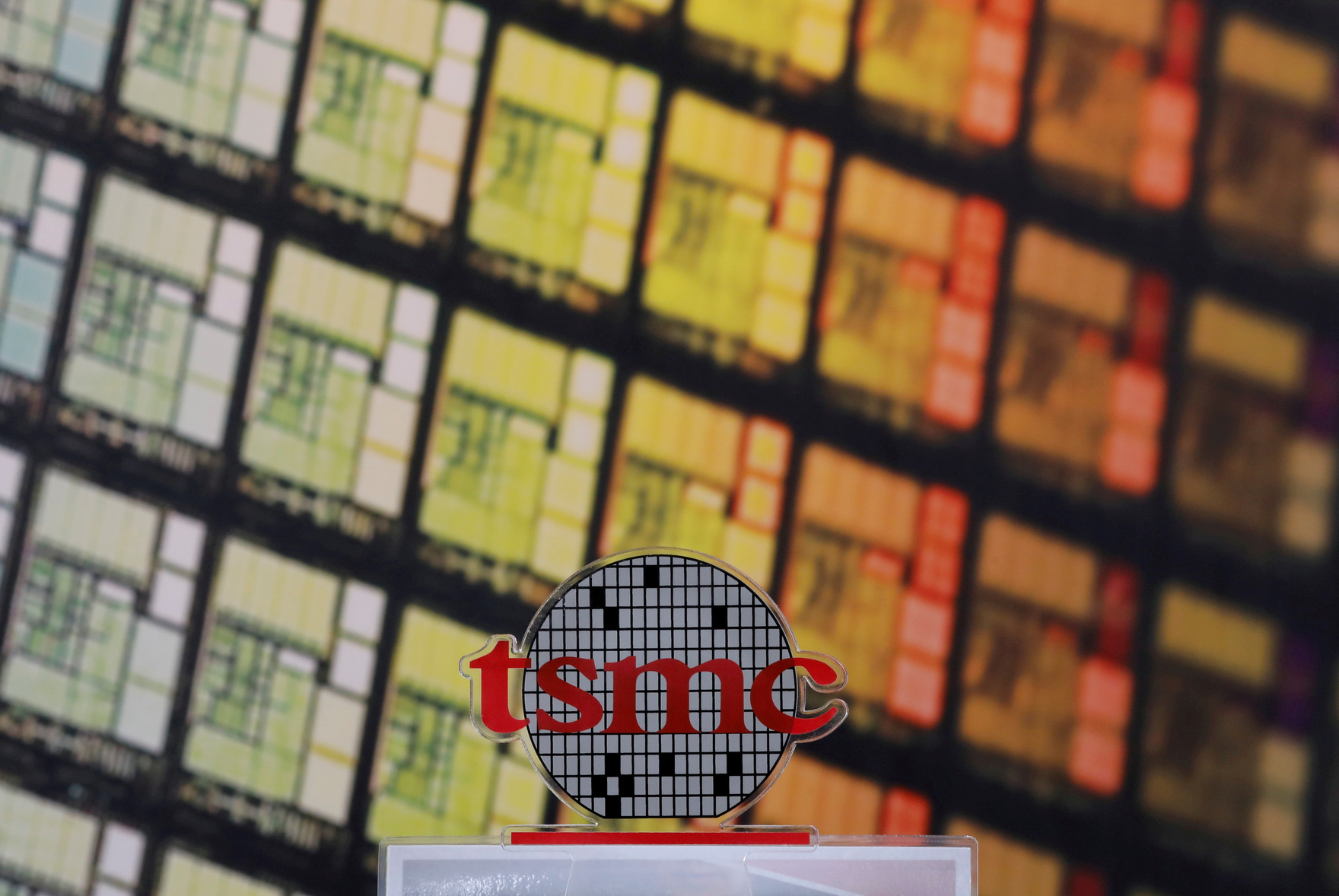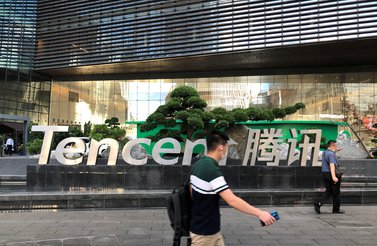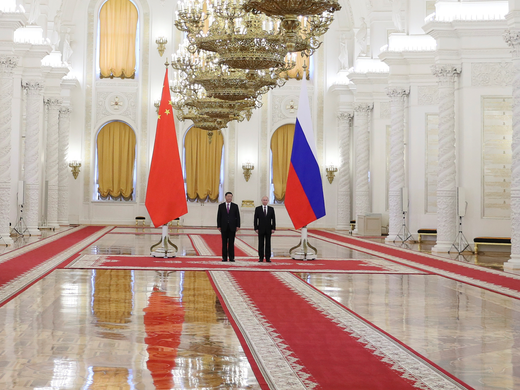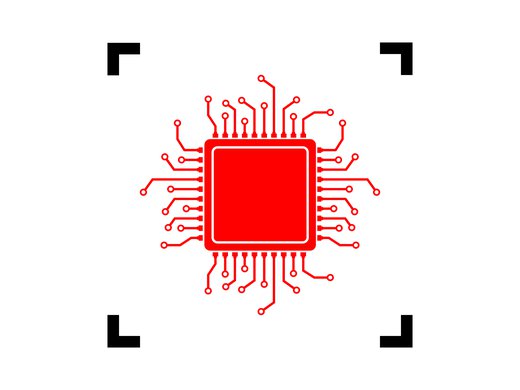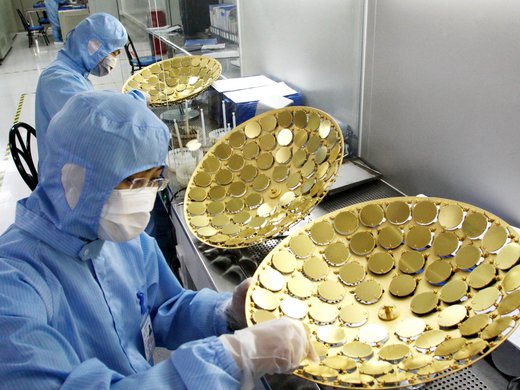The CHIPS and Science Act, which provides $52.7 billion over five years to bolster domestic semiconductor manufacturing capability in the United States, was signed into law by President Joseph Biden on August 9, 2022. That same day, across the Pacific, it was announced that three more executives of the “Big Fund” — as China’s state-backed investment fund to spur the semiconductor industry is known — were investigated for corruption.
Together with investigations launched in July of Ding Wenwu and Lu Jun, president and asset manager, respectively, of the Big Fund, and Zhao Weiguo, the ousted CEO of Unigroup, one of the largest beneficiaries of the Big Fund, this now means that almost every key figure involved with China’s state-sponsored Big Fund is facing legal trouble.
The two events are emblematic of two opposing trends foreshadowing developments in the chip industry in the United States and China. At stake? Nothing less than war and peace in the Western Pacific. In addition to bolstering its own industry with the new CHIPS Act, through sweeping export controls the United States is further throwing up hurdles to Chinese domestic chip innovation and cutting Beijing off the supply of the most advanced chips and the equipment, tools and software needed to make these chips. As it stands, more than 60 percent of the world’s supply of semiconductors, including 90 percent of the most advanced chips, are manufactured in Taiwan — which would make a cross-strait war and the attendant disruption to the supply chain catastrophic on multiple levels.
China is labouring to advance its semiconductor industry but has so far failed to realize its goal of vastly increasing domestic chip supply. The country lags two to three generations behind Taiwan and South Korea in manufacturing the most advanced chips. The United States continues to dominate the global semiconductor industry, controlling the supply of most advanced technologies needed for their production.
President Xi used “choked” twice in China’s key annual Central Economic Work Conference in 2020 to describe the country’s weakness in cutting-edge technologies, making it a buzzword in Chinese society.
America’s difficulty, meanwhile, is its lack of domestic chip manufacturing. Its reliance on overseas manufacture of semiconductors (in particular, advanced chips manufacturing in East Asia) makes it uniquely vulnerable to supply-chain disruptions in the event of a global crisis such as a future pandemic or global war. This is what the CHIPS and Science Act is supposed to help solve.
The Big Fund was formed in 2014. Having raised 138.7 billion yuan ($20.54 billion) by 2018 and roughly 200 billion yuan ($29 billion) in 2019, it has helped stimulate an investment spree in China’s semiconductor sector. Nevertheless, China has fallen short of its goal of domestically producing 40 percent of its IC (integrated circuit) chip requirements in 2020. Domestic production accounted for just 15.9 percent of all IC chips sold in mainland China in 2020 (and, if not counting chips produced by foreign companies in the country, China’s self-sufficiency rate drops to only 5.9 percent). The goal of reaching a 70 percent self-sufficiency rate in IC chips by 2025 seems a bridge too far. According to an estimate by market researchers IC Insights, China’s domestic IC production share will reach 21.2 percent in 2026, massively missing its target of 70 percent.
Further, China faces a serious “choke point” when it comes to its capacity for advanced manufacturing processes that can produce chips with a “technology node” of 7 nanometres (nm) or smaller, while world-leading companies such as Taiwan Semiconductor Manufacturing Company (TSMC) and Samsung are realizing mass production of 3 nm chips. (Chips features are measured in nanometres, a nanometre being one millionth of a millimetre. A microchip the size of a fingernail contains billions of transistors; the smaller the transistors, the more of them you can fit on a chip, and the more powerful, efficient and fast the chip. The 3 nm technology node is more advanced than 7 nm because it allows more transistors to be packed into a given size of chip.) A series of restrictions imposed by the US government since 2020 on exporting most advanced chips and manufacturing equipment, such as EUV (extreme ultraviolet) lithography, have effectively “choked” China’s high-tech advancement. President Xi used “choked” twice in China’s key annual Central Economic Work Conference in 2020 to describe the country’s weakness in cutting-edge technologies, making it a buzzword in Chinese society. Since the ZTE ban in April 2018, Xi has urged the country in an unprecedented way to work toward breakthroughs in core technologies.
Semiconductor Manufacturing International Corporation, the most advanced chip-manufacturing company in China, is able to make 14 nm and even 7 nm chips using old DUV (deep ultraviolet) lithography, but at a greater cost and lower yield rate, due to this technology’s lower level of sophistication. The US export ban announced in August 2022 on electronic design automation, or EDA, software tools needed for chip design further extended US restrictions on China’s high-end chip design sector. The ban specified restricting export of EDA for 3 nm or more advanced chip design to mainland China.
Then, its September restrictions on exporting some chips to China — specifically, preventing California-based Advanced Micro Devices (AMD) from supplying its advanced artificial intelligence (AI) MI250 chip, and Nvidia, also from California, from supplying its A100 and H100 high-end graphics processing unit chips — further indicates America’s intent to restrict Beijing’s development in AI. The latest semiconductor export restriction, announced in October, aims to cut China off from obtaining the most advanced chips and to restrict its ability to make its high-end chips themselves. Following a succession of additional efforts since July, these new rules are sweeping restrictions to contain China’s capacity to obtain advanced chips and manufacturing tools and equipment.
The increasingly strict restrictions have hit China’s high-tech sector hard, in particular Huawei and its wholly owned HiSilicon, ranked in 2020 one of the world’s top-10 chip design companies. Without TSMC’s supply of 5 nm or 3 nm chips, needed to build SoC (“system-on-a-chip”) ICs, which combine many elements of a computer system into a single chip, Huawei’s high-end cellphone, once a challenger to the iPhone, has been struggling for survival. Without a supply of advanced chips in future, China’s rapid progress — led by Huawei and other high-tech companies — in AI, autonomous driving vehicles, the Internet of Things, cloud computing, supercomputing, 5G or future 6G base stations (central connection points), and other critical telecommunications infrastructures will slow or stall. Chinese internet giants such as Alibaba, Xiaomi and Tencent also depend on TSMC for the manufacture of their own specialized chips that are not for general use.
Allegations of corruption in the Big Fund reveal deep-seated problems in China’s state-driven model for technology development. China’s bureaucracy-dominated governance style has led to a campaign-style catch-up strategy for quick success, which has not been effective. Officials who have little knowledge of the semiconductor industry set unrealistic goals to curry favour with their bosses and President Xi Jinping.
Under the bureaucracy-dominated model, government officials do not encourage investment in research and development (R&D). They instead favour short-term projects with more likelihood of success. This approach neglects the key requirements for a successful semiconductor sector, including long-term accumulation of R&D input, human talent dedicated to it, huge and consistent investment, and extremely high tolerance for trial and error. The chip industry is highly competitive and involves fast-evolving technology, requiring a longer payback period.
It’s paradoxical that Xi maintains great confidence in the mantra of “the East is rising, and the West is declining” while simultaneously repeating that China is being “choked” by the West in core technologies. The problem, in a nutshell, is that China’s senior leadership does not seem aware there is a problem. Rather, Xi has doubled down on China’s state-driven model, the so-called “new whole nation system.” His “confidence doctrine” — effectively, a belief that China’s political system and culture of socialism are paramount — appears to have contributed to an overconfidence and lack of critical thinking about the state-driven model.
A more productive path forward for China would be for it to seek to engage constructively in the global supply chain. One can argue that given increasingly draconian US sanctions, Beijing has no choice but to seek to develop its homegrown advanced chip industry. It’s a fair point. But even if this is true, it makes little sense for China to accelerate its decoupling from global supply chains at a time when the United States is actively decoupling from China, in terms of advanced semiconductor production.
It’s worth noting that major American chip companies such as Nvidia, AMD, Qualcomm and Intel, as well as three top chip toolmakers, KLA, Applied Materials and Lam Research, have a strong interest in continuing to sell products to China and could suffer a significant revenue loss because of the chip export ban. Corporate lobbying in the United States has helped dilute chip export restrictions. (Data from the US Commerce Department shows that 88 to 94 percent of tech exports applications to China were approved in 2020–2021, and a variety of chips and AI technology products continue to be shipped to China.)
The bottom line is that China’s bureaucracy-dominated governance system is stifling technological breakthroughs and innovation and will continue to do so as long as China remains on its current ideological path.
Indeed, China’s decision to move into a stronger anti-Western posture since the Russian invasion of Ukraine suggests that Xi now places ideological and geopolitical calculation before the market and business development that China requires if it is to catch up technologically. Xi made this amply clear with the unprecedented stress on national security in his speech at the opening of the recent twentieth Chinese Communist Party Congress on October 16.
The CHIPS and Science Act is reminiscent of how the United States won the Cold War: the overstatement of the Soviet threat in America helped mobilize resources nationwide to develop advanced techno-industries to win over the Soviet Union before it became an equivalent adversary. The United States is doing the same to today’s China, whose semiconductor industry will lose out if its current path and governance model for development do not change.
